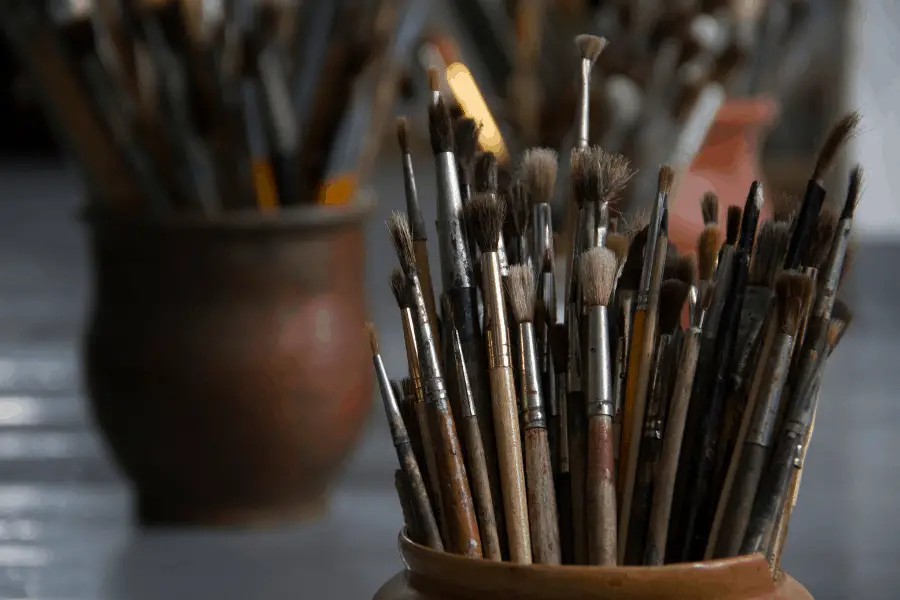Good paintbrushes have the potential to be expensive, so you might be wondering if you can use one brush for more than one purpose. Even if you technically can, should you?
So, can you use the same brushes for oil and acrylic paints? You can, but it’s to recommend. If you use both acrylic and oil paints frequently, it’s highly recommended that you invest in two sets of paintbrushes instead of using one set for both. Even if you clean your brushes with solvents, some of the paint can still be stuck to the bristles.
When you use the same paintbrushes for oil and acrylic paints, you have a very high risk of ruining both paints. Oil paint can get stuck to the bristles and contaminate the acrylic paint, and the same can happen with acrylic paint to oil paint. It is best to avoid this situation at all costs.
What’s the Difference Between Oil and Acrylic Brushes?
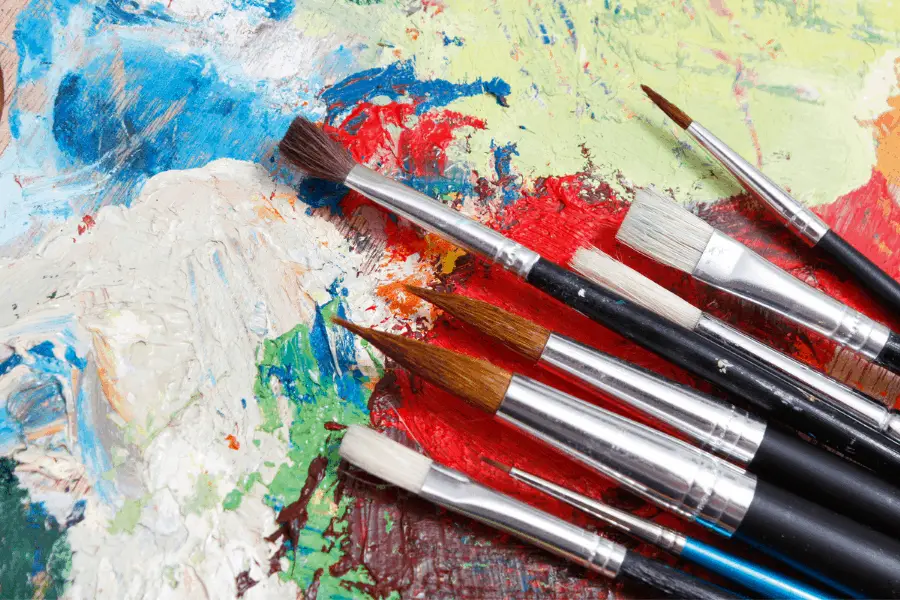
The main difference between oil paintbrushes and acrylic paintbrushes is the material that the bristles are made out of. Different bristles will give you different results with the paint, so it is important that you are using the right brush.
I highly recommend using Arteza Paintbrushes. They are great for acrylics and oil paints. I suggest getting two sets, that way you can have one for your oil paints and one for your acrylics.

Acrylic paints will perform best with synthetic paintbrushes. Acrylic paints will usually have a high pH balance, which will damage the bristles of natural paintbrushes and make them break easier.
Acrylic paints are also known to have ingredients that will strip the natural oils from the hair of natural bristles. This can cause the bristles to become brittle, again making them break much easier.
Oil paints will work the best with natural bristle paintbrushes. This is because the bristles are stiff and can hold more paint at a time than synthetic brushes. One brush load of paint on a natural brush will last longer, meaning you won’t have to refill your brush as often.
My favorite and top pick is always Arteza Acrylic Paints. They have so many different colors, and the quality is amazing! I usually use Arteza Paints for all my projects.

Below are my other top recommendation for oil paint and acrylic paintbrushes.
ARTIFY Synthetic Paintbrushes for Acrylic Paint

Natural Bristle Oil paint Brushes

Can You Use the Same Brushes for Acrylic and Watercolor?
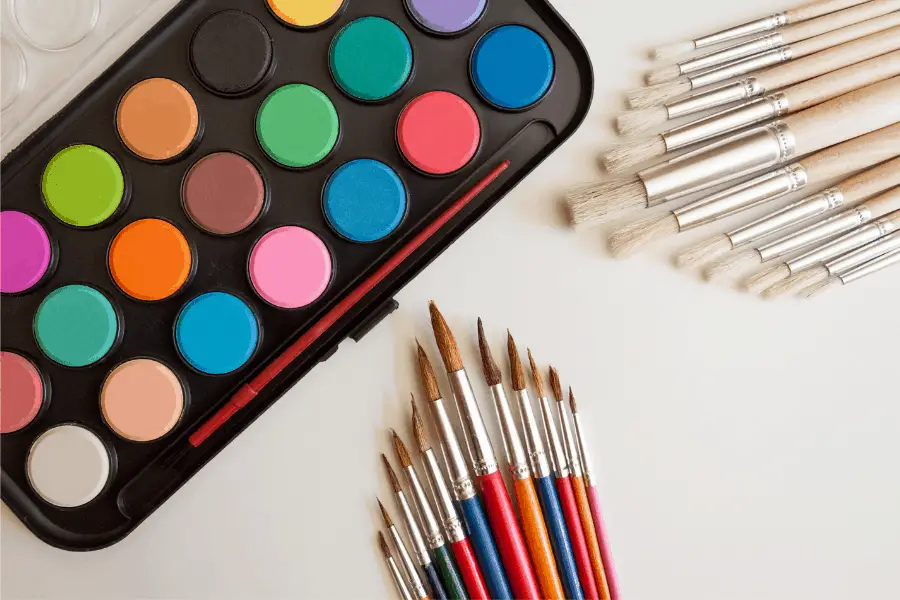
You can safely use watercolor paints with acrylic paintbrushes but, like with oil paintbrushes, it really isn’t recommended to do so. The different paints are made up of different chemicals that will react differently to the brushes. The construction of the brushes are also very different.
Acrylic paintbrushes are made specifically for the consistency and dry time of acrylic paints. Watercolor brushes are designed to handle the delicacy and fluidity of watercolor paints and different techniques that are used in watercolor painting.
Acrylic paints are also going to be harsher on paintbrushes than watercolors. This means if you are using the same brushes for both mediums, the bristles will break down faster than they would if you just used the brushes for watercolors.
Can You Use Oil Paint and Acrylic Paint Together?
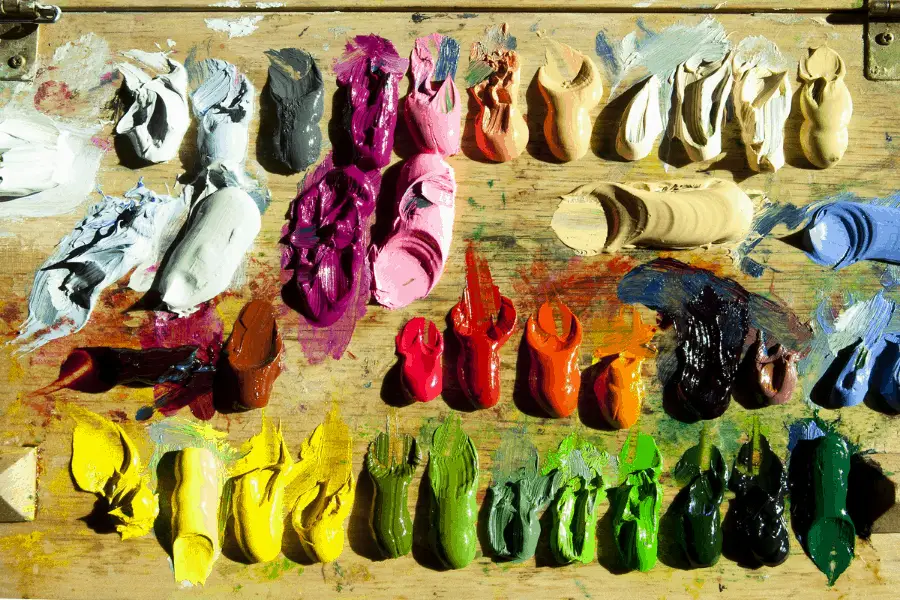
Acrylic paints are water-based, and oil paints are oil-based, so it is not possible to mix them together on a palette before you paint on the canvas. They are made up of different properties and have different requirements for drying and varnishing.
However, if you want to paint one of the paints first, then the other one on top, this is completely possible. It is recommended to paint oils over acrylics, but never acrylics over oils. This can quickly ruin your entire painting that you’ve worked so hard on.
The best way to use these two paints together is to start by applying a layer or two of gesso to the canvas before you apply any paint. You can then paint with your acrylics to create the design you are creating.
Give the acrylic paints plenty of time to dry. They should be dry between two and four hours, but you can wait longer to paint if you feel like the painting isn’t dry yet. When the acrylic paint has completely cured, you can paint over it safely with oil paints. This is popular among artists who enjoy the way both paints make their work look.

You should never paint with oils before painting with acrylics. Since the properties are different, the acrylic paint will literally not be able to stick to the surface of the oil paint. This will cause the acrylic to flake off either instantly, or after just a few weeks.
As long as you use the two paints together properly, there is no reason you can’t use oil and acrylic paints in the same painting.
How to Clean Oil Paint Brushes
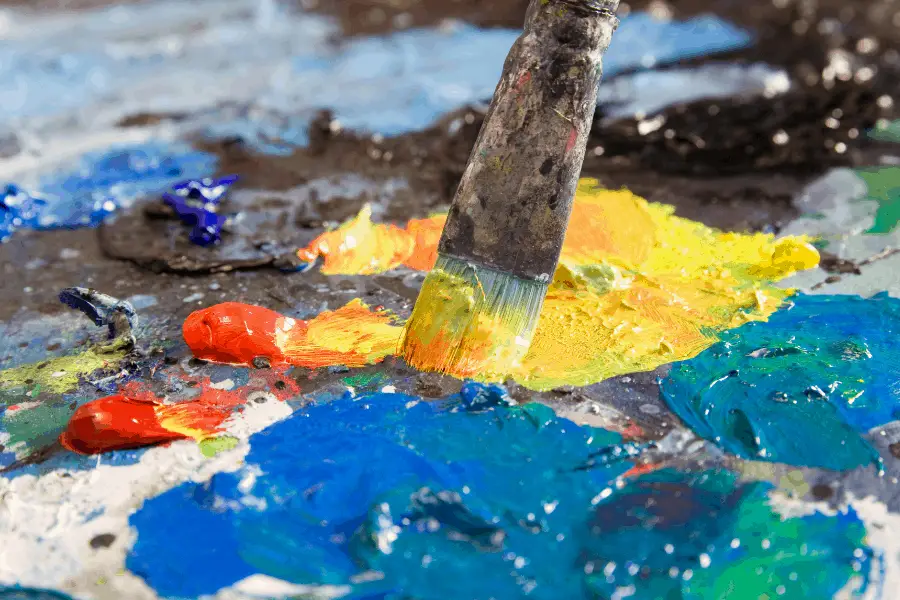
Oil paintbrushes are usually really expensive, so you want to make sure you take care of them properly so they can last longer. One of the most important things you can do for your oil paintbrushes is clean them properly.
There are a couple of different ways you can clean oil paintbrushes. If you use the brushes frequently, it can be annoying to clean them thoroughly after each use. However, there is a quick and easy way to clean your oil brushes that you plan to use again within a few days.
First, give the brushes a quick wipe to get rid of any extra paint. Dip the bristles into a slow-drying oil such as safflower oil. Allow your brushes to rest on a drying rack. When you use your brushes again, wipe the slow-drying oil off and you will be ready to go.
If you don’t plan on using you r oil brushes again in a few days, you will want to clean them more thoroughly. You will need paper towels, paint thinner, soap, old cups, and an oil paintbrush cleaner.
First, put some of the paint thinner into one of the old cups. Dip your brushes into this cup and rinse them to get rid of any excess paint that is stuck to the bristles. Gently wipe them with a paper towel, then rinse them with warm water. Repeat as necessary until the excess paint is gone.
I recommend using Turpentine to clean your brushes. Turpentine is a great oil paint thinner that has many uses.

Dip the brushes into the paint thinner again, then gently wash them with some soap. Create a lather so the soap gets deep into the bristles. Be careful that you are not pushing into the bristles, as this can damage them. As you wash with soap, you will see more color bleed out of the paintbrush.
Rinse the brushes with warm water and repeat the soap process until there is no more color coming out of the brush. If you use darker colors, you might also want to use an oil paintbrush cleaner, but this isn’t required.
After your brushes are clean, sculpt the tip back into shape and set the brushes in a brush holder to dry. Don’t rest your brushes on anything that can fold or dent the bristles, as this can cause permanent damage to the brush.
Final Thoughts
Paintbrushes have the potential of being really expensive, so you are probably wondering if you can use the same set for both acrylic paints and oil paints. Unfortunately, this is not recommended as the two brushes are constructed differently and have different bristle materials.
Acrylic paints work best with a synthetic brush, while oil paints perform better with natural brushes. You shouldn’t use a natural brush with acrylic paint because the chemicals in the paint can damage the bristles, causing them to break and forcing you to spend more money on paintbrushes.
Make sure to follow all my tips and recommended products to ensure your paintbrushes last a very long time. Also, don’t forget to check out my other articles for all your painting Q&A’s. Happy painting!

